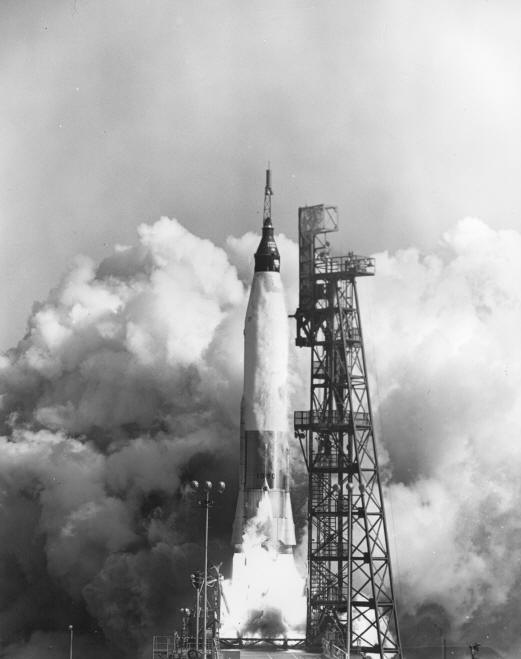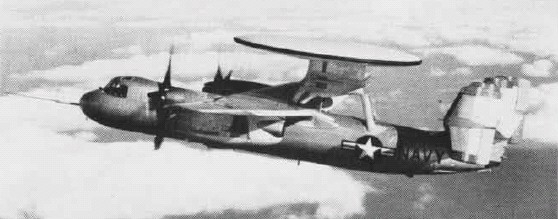Flightdeck Friday: F7F Tigercat

3 June 1941. Citizen Kane was playing in the theaters and the Browns score 9 runs in the 7th to drive Bob Feller out of the box and beat the Indians‚ 12-6; Joe Grace has a double in homer in the big inning. In northern Africa British and Australian troops fight losing battles against Rommel’s Afrika Korps, Greece has surrendered and Hitler prepares to invade Russia. The singular bright spot was the sinking of the Bismarck after an intensive hunt. In the Pacific, with the fall of France in 1940, the Japanese military had moved into French Indo-China and now was positioning itself to take the oil-rich Netherlands Indies. The US Navy was building its presence in Pearl with additional battleships from the west and east coasts and was working to reinforce outposts in the Philippines, Guam, Wake, Midway and elsewhere.
In Washington DC, the VF division of the Navy’s Bureau of Aeronautics (BuAer) placed an order for three fighters, two to be built by Grumman and one by Curtiss. Envisioned as a leap ahead in fighter design, the presumed capabilities of these fighters were significantly advanced over the current state-of-the-art as embodied by the Brewster Buffalo and the Grumman F4F Wildcat. The Curtiss fighter was the XF14C (and subject of an earlier Flightdeck Friday). The Grumman fighters? One was destined to become a legend – the XF6F Hellcat and the other, the first twin-engine fighter for the Navy, the XF7F Tigercat.

Curtiss XF14C Grumman XF6F-1

Progress on developing the prototype was slow. At the Navy’s request, and underscored by actions in the Pacific, Grumman concentrated on the XF6F Hellcat. As such, the first XF7F prototype would not take to the air until 16 months after the XF6F first flew and two months after the Hellcat’s combat debut. Part of the problem was the Navy kept changing the specifications for the engines, first agreeing with Grumman’s recommendation of the use of a pair of 1,600 hp Wright R-2600-14 radials driving three-bladed Curtiss props that rotated in the same direction, the Navy requested counter-rotating props on the R-2600’s, then selection of the Pratt&Whitney R-2800-18 with two-stage superchargers, but the general unavailability of those power plants led to the first XF7F to fly with 2 x 2,000 hp R-2800-18’s with single stage superchargers.

The first prototype flew on 3 November, 1943 with company pilot, Robert Hall at the controls for the 21-minute flight. Early on, it was apparent the XF7F was loaded with performance, Grumman test pilot Corky Myers wrote:
“The noise of two 2,000hp Pratt & Whitney R-2800-10B engines just outside the thin canopy was most impressive. I never made a first flight that was as powerfully soul-stirring as the first flight I made in the XF7F-1 one day before my first anniversary at Grumman. Even my first flights in jets weren’t as memorable. It was mind-boggling to keep this eight-gun fighter in a 30-degree climb until it attained its service ceiling. In comparison, the soon-to-be-famous six-gun F6F-3 Hellcat fighter I had been testing suddenly seemed like an elderly pussycat.”
Still, all was not well for the XF7F. The first prototype crashed in May 1944 and even it demonstrated marginal, if not lethal, spin characteristics and high-speed dive recovery. The normal Navy SR-38D spin-demonstration requirement was five turns in both directions, both from upright and from inverted entries. The Hellcat had displayed relatively benign spin characteristics and easily met the above. The XF7F, however, would not go beyond one and a half turns before beginning to exhibit unrecoverable flat-spin tendencies. Subsequent tests in the NACA spin tunnel bore out that fact and indicated the requirement to add a 29% increase in the size of the vertical fin and rudder. That would not occur though, until the F7F-3. Carrier suitability trials were problematic at best – the newly designed “Y”-tailhook failed and the engine-out controllability speeds were 40 knots over specified.
However, a war was still on and the F7F showed promise in two areas – ground support and as a night fighter, so production was ordered and eventually 364 F7Fs were built, including 34 F7F-1s, 65 F7F-2Ns and 250 of the definitive F7F-3s. Production was terminated as part of the post-war draw down in November, 1946.



F7F-3: The F7F-3 was built in three variants – a single-seat fighter, a 2-seat night fighter (a second seat was added behind the pilot for the radar operator) and a single seat photo-reconnaissance fighter. All were operated from shore and primarily with the Marines. The F7F-3 varied from the prototypes by having the larger vertical tail, uprated engines (2,100 hp R-2800-34W’s). Two seat F7F-3Ns were outfitted with the SCR-720 radar in a bulbous nose radome and the 4 x .50 cal guns deleted (in practice, most units removed the guns anyway as they had a tendency to jam, relying instead on the 20mm cannon). The F7F-3P entailed the mounting of cameras in the rear fuselage of fifty-eight aircraft. The mods were carried out by Lockheed Modification Center with camera ports under and on both sides of the aircraft as well as mounting of an ADF antenna on top of the fuselage.



Service history. Despite eventually successfully completing carrier qualifications, the F7F was not regularly deployed from carriers. F7F-2Ns, F7F-3Ns an -3Ps were later operated for brief periods by pilots of VF(N)-52, VCN-1, VCN-2 and VMF(N)-534. The F7F-1 debuted with its assignment to VMF-911 at MCAS Cherry Point during the summer of 1944 for aircrew training. VMF(N)-531, home based at MCAS Eagle Lake, Texas, would receive the first F7F-2Ns and later deployed to Guam in July 1945. From there the F7Fs were flown to Okinawa, arriving on the last day of the war. The only variant to see action during WW2 turned out to be the -3P variants, which first arrived in Guam in May, 1945 and forward deployed to Ulithi, Peleliu and Okinawa, flying operational sorties the last few weeks of the war. When fighting broke out in Korea in 1950, the F7F was employed in nighttime interdiction and interception flights, along with F4U-5N Corsairs. It was in the latter role, as a night interceptor, that the F7F drew its only air-to-air kills, scoring two Polikarpov Po-2’s in June and September that the North Koreans used to harass US troops at night. The final missions the F7F was employed on included night support missions for USAF B-29s by dropping flares and markers to designate targets.

F7F odds and ends
- Grumman first proposed the name “Tomcat” for the F7F series. The Navy flat turned it down, tersely noting that "The name ‘Tomcat’ is unacceptable. It denotes feline promiscuity." Tigercat was deemed an acceptable substitute. Thirty years later the culture evidently changed enough to make the name acceptable for Grumman’s last fighter.
- In civil service the Tigercat served as a fire-fighting aircraft with an 800-gal tank grafted to the centerline. In this configuration it served in the 1960s and -70s.
- The Tigercat had a less than memorable Navy career, with its longest service providing drone control, ironically enough of drone F6Fs.
- Although all versions were equipped to handle the Mark 13 air-dropped torpedo, operational squadrons did not train to employ this weapon even though the F7F would have been the fastest torpedo bomber around.
- The Fleet Air Arm was testing two-engine fighters, including the Sea Hornet, and borrowed two examples of the F7F for evaluation. Reaching the same conclusions as the Navy, the FAA returned the two after a short trial.

.jpg)

Grumman F7F-3 Tigercat
Type: Fighter
Crew: 1, Pilot
Armament: four 20mm cannon, four .50 cal machine guns, optional torpedo, 1000 lbs. bombs
Specifications
Length: 45′ 4" (13.82 m)
Height: 16′ 7" (5.5 m)
Wingspan: 51′ 6" (1.68 m)
Wing area: 455 sq. ft (42.27 sq. m
Empty Weight: 16270 lbs (7378 kg)
Gross Weight: 25720 lbs
Propulsion
No. of Engines: 2
Powerplant: Pratt & Whitney R-2800-34W
Horsepower: 2100 hp each
Performance
Range: 1200 miles (1932 km)
Cruise Speed: 222 mph (357 km/hr)
Max Speed: 435 mph (700 km/hr)
Climb: 4530 ft/min (1380.68 m/min)
Ceiling: 40700 ft (12405 m)





Thank you for such a great article on an aircraft I knew of, but knew little about 😀 !
I’ve seen a couple of these and had wondered about thier history, especially as they were one of the “Cats” from the Grumman Iron Works. I was fortunate enough to see the “Flight of the Cats” at Miramar with the Tigercat, Bearcat, Hellcat, and Tomcat, but that picture you posted was just icing on the cake adding the Panther to the formation. At least there’s still one Grumman on carriers, right 😉 ?
Well, two if you count when the COD comes aboard 🙂
– SJS
I had the honor seeing an F7F Tigercat fly at an airshow 13 years ago. When the plane was on the tarmac, I watched in fascination as the pilot (and his grandson) poured a whole case of oil into the port side engine. He had to go home to Wisconsin (I think) and he taxied out and made a pass across show center. It raised goose bumps when I saw him hit the throttle and white smoke poured out of the engines when he made a lazy dive and banked off to the right. A beautiful bird.
Beautiful bird, but not strrdy enough for carrier duty. I was on deck on the Shangri la. On hard landings a wing would
break off.
I have pictures if you wish.
Rich
Rich:
Yes, please send along those photos (they’ll be given due credit) in an article I’m working up on aircraft and carrier requirements…
– SJS
A beauty, love to fly one! 😎